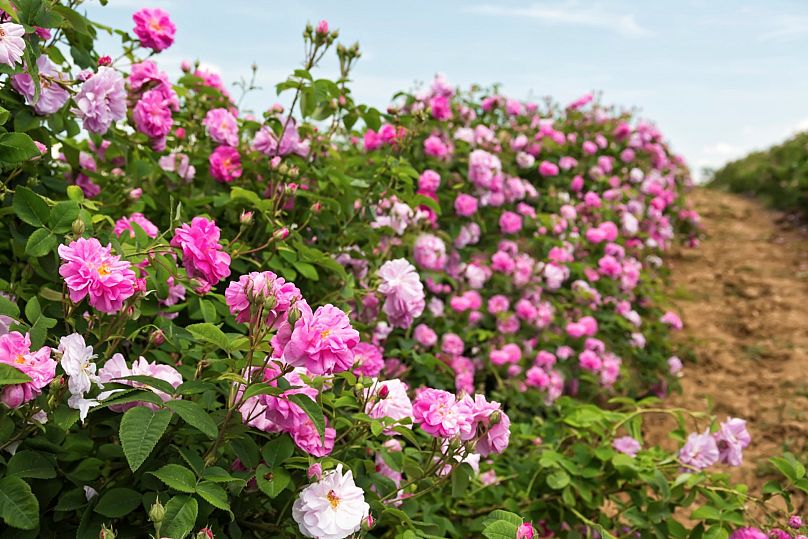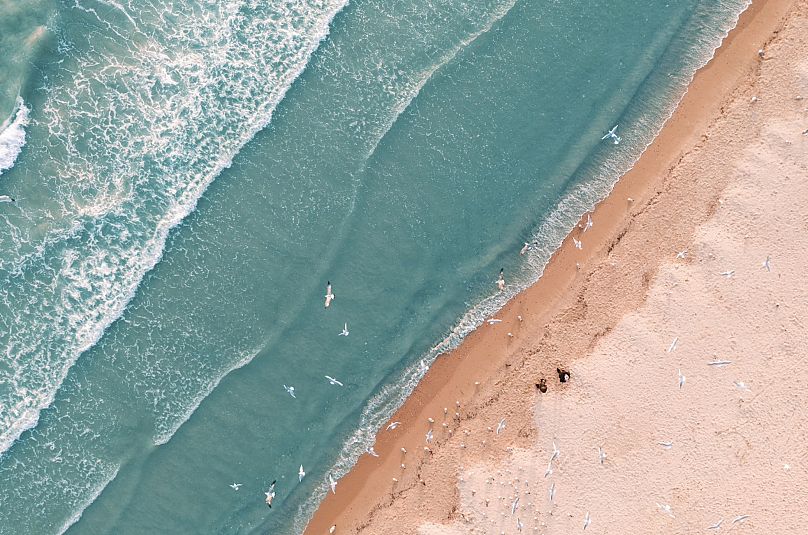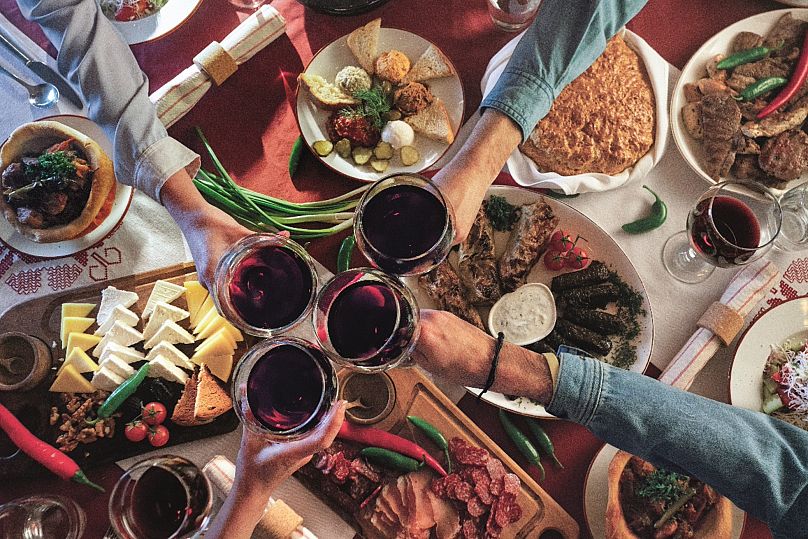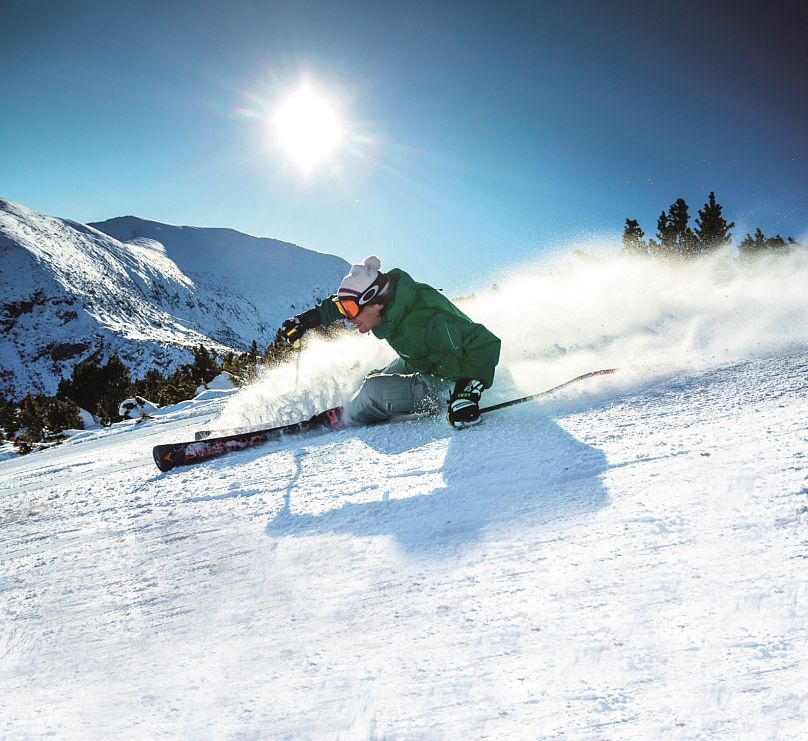Roses and gold, forest green and sparkling azure blue, and after the first snows the gleam of bright white: for every season in Bulgaria there are captivating colors and unforgettable experiences to match. Along the sun-kissed Black Sea coast Burgas and Sunny Beach are idyllic havens for summer holiday fun, but there is even more to the shore! Golden Sands just north of Varna, for example, is another world-class Bulgarian seaside resort, fringed by the gorgeous green hills of the Golden Sands Nature Park. When winter comes, discover the magnificent snow-clad peaks of Pirin National Park: Bulgaria offers visitors a tremendous array of all-season options to indulge all your tastes. And Bulgaria's position at the crossroads of east and west makes it a magnet for cultural experiences all year long.
Springtime traditions
Spring is the season that signifies a reawakening of the senses, which is reflected in Bulgarian folk traditions that you can observe in villages throughout the country. March means the ritual of making martenitsas, adornments made of white and red yarn and usually in the form of two dolls, a male and a female that symbolize the welcoming the spring. The ritual of Lazaruvane is also bound to the advent of spring and occurs a week before Easter when young village maidens adorned in festive attire and flower garlands walk from house to house offering blessings of good health and bountiful harvests. Things heat up, literally, on the name days of saints Konstantin and Helena in late May or early June: the time of the Nestinarstvo ritual fire dancing that takes place in some mountain villages. Drums beat and Bulgarian gaidas (bagpipes) play on as villagers clad in traditional costume (men in white with black trousers, women with white dresses and colored aprons) actually walk barefoot across burning embers in this almost hypnotic sensory ceremony with very ancient origins.
And you might not have known it, but come springtime there's no mistaking it: the rose is the symbol of Bulgaria. May and June is rose-picking in the Valley of the Roses, in central Bulgaria around the town of Kazanlak, in Stara Zagora province. The valley is about 95 kilometers long and 12 kilometers wide and every spring it is transformed into a veritable corridor of fragrance: half of the world's rose oil is cultivated here from the abundant crop of pink Damask roses. The best time to join the locals in the rose picking process is weekend mornings during these special months. The famous Rose Festival in Kazanlak runs for three weeks every spring, culminating on the first weekend of June.
Bulgaria's summer sun shines for all
Bulgaria's position in the southern part of a temperate continental climate zone brings with it subtropical influences and the wide angle of sunlight that falls on the country makes it predominantly sunny. The entire eastern side of Bulgaria faces the Black Sea, with wide beaches of golden sand inviting vacationers to relax in an atmosphere of gentle surf and warm sea breezes from May to October.
Dozens of small beaches in charming coves provide a secluded counterpoint to more celebrated stretches of sand such as Sunny Beach, with its popular waterfront, organized sun beds on the wide beach and numerous water sports options. Golden Sands is a Blue Flag beach close to a nature reserve, while the gorgeous Bolata Beach, near Kavarna, actually forms part of a nature reserve. Kara Dere is a sandy paradise for those who seek more secluded swims, Harmanite Beach in Sozopol is family-friendly (and another Blue Flag beach) and Sinemorets Veleka—also called Veleka Beach,—is located on a dazzling sandy stretch of the south Black Sea coast, making it a prized seaside setting to swim or simply relax.
Summertime is also a chance to discover the great Bulgarian outdoors on scenic drives or taking hikes along misty ridges, high peaks, deep valleys and long gorges like Iskar. A third of Bulgaria's land area is mountainous and the rest is predominantly hilly, and bracing mountain air comes as pure balm to those who savor landscapes of forests, natural lakes, lush meadows and majestic summits. There are two peaks of over 2,600 meters elevation in the Pirin range, while the Rhodope Mountains—the mythical home of Orpheus—boast 11 peaks with an elevation of over 2,000 meters. The many natural landmarks, from caves and waterfalls to alpine lakes – provide a sensory feast regardless of your fitness level. There are well-marked hiking routes through Bulgaria’s mountains, such as the southern traverses of the Kom – Emine European trail E-3, the European trail Е-4, from Vitosha through Verila, Rila, and Pirin (the latter two are also national parks), and the European hiking route E-8, from Rila and its myriad lakes to the Rhodopes.
Fall for Bulgarian wine and culture
Fall in Bulgaria means more than falling leaves! Since ancient times wine production has been intertwined with the life and traditions of the Bulgarian land, which is no surprise given Bulgaria's great soil diversity and abundant sunshine. The tradition started with the Thracians who worshipped the gods of wine, Zagreus and Dionysius, and used the fruits of the vine in religious rituals—sometimes even serving wine in vessels made of gold. Thracian red wine was mentioned by Homer for its superior "unmixed" quality (the Greeks would later mix wine with water). September and October are optimal months for exploring Bulgaria's five wine regions, all of which are home to world class wineries that offer wine tastings to visitors. Some of the unique Bulgarian varietals you'll want to look for are the raspberry-hued Gamza (a classic light red), Mavrud, with its top notes of ripe wild berries and spices, Melnik, Muscat and Dimiat, an aromatic white varietal—you can learn more about Bulgaria's terroir-focused winemaking traditions at the Wine Museum in Pleven.
Bulgarian gastronomy is the result of the delicious interplay of different cultures over many centuries, with an emphasis on organic, homegrown fruits and vegetables (including some of the most luscious cherries and apricots you've ever tasted!), aromatic spices, organic honey, delicious sausages like spicy sudzhuk and grilled meats and of course the world-famous Bulgarian yogurt and white brine (feta) cheese, used in many recipes. As you travel around the country, take the opportunity to sample the diverse regional cuisines, such as Thracian dishes cooked in clay pots with lots of paprika, spearmint and basil: ancient origins and authentically Bulgarian! When you try the hearty Pirin cuisine, especially in the many taverns of Bankso, you'll want to pair it with the renowned locally produced red Melnik wine. Of course, you can pair Bulgaria's wines with the country's unique cuisine any time of year.
Autumn, when the days are still long but temperatures are cooler, is also an ideal time of year to discover some of Bulgaria's cultural treasures. The cities are a sure place to start, whether that means admiring the ornate Alexander Nevski cathedral in the capital, Sofia, strolling around Plovdiv with its mix of Roman ruins and buildings of the Bulgarian National Revival style, or exploring the enchanting former Bulgarian capital of Veliko Tarnovo. Then there's the spectacular and brooding Belogradchik Fortress and the stunning archaeological complex of Perperikon, where long ago rituals of wine and fire were held at its clifftop Temple of Dionysus. The site is located near Kardzhali, in southern Bulgaria's eastern Rhodope mountain range.
Winter: hit the slopes
Bulgaria for skiers? Absolutely! At lower elevations snow cover lasts from December to March, But the ski season in the medium high and alpine resorts lasts about 130 days each year and sometimes extends well into April—crossing over into early sunbathing season on the Black Sea coast. The Pirin mountain range is one of spectacular alpine beauty, a fitting backdrop for the ski resorts of Bansko, Dobrinishte, and Predela. Bansko has hosted World Cup competitions in both alpine skiing and biathlon and entices with top caliber ski runs, fine hotels and hearty locavore Pirin cuisine. The largest resort in the Rila range, in southwestern Bulgaria, is Borovets. It boasts excellent ski runs and mountain hotels. Unique opportunities for combining hiking, skiing and spa tourism are also offered in Panichishte and at Sapareva Banya. Or ply the pistes in Pamporovo, the highest mountain ski resort in the Rhodopes. Set amidst dense spruce forests, it's a sublime setting for making unforgettable wintertime memories.





